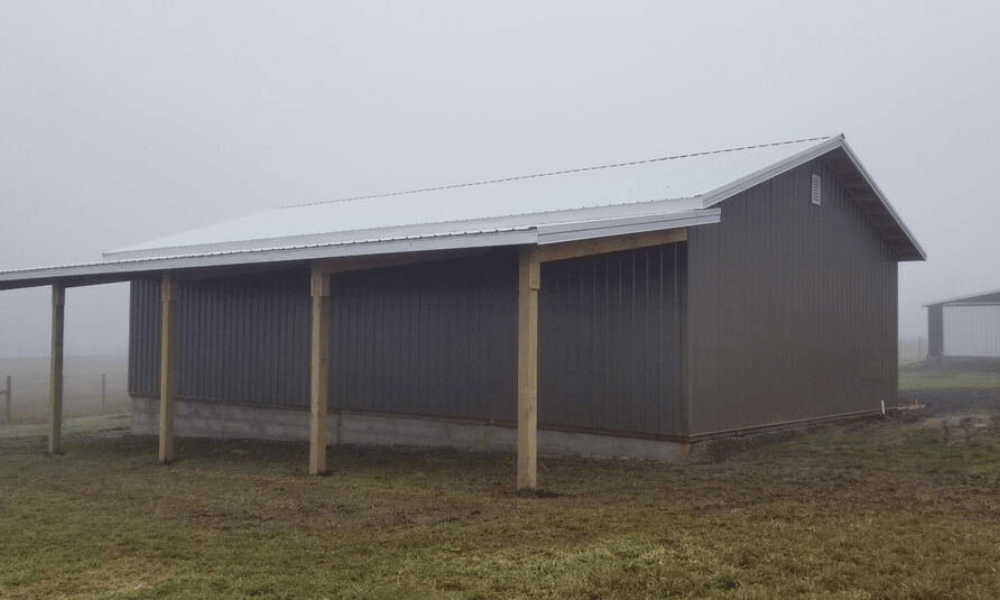Introduction
In the quest for sustainable living, integrating renewable energy into building designs has become a necessity rather than a luxury. For those venturing into pole buildings—a versatile and cost-effective alternative in construction—understanding how to incorporate renewable energy can enhance functionality and reduce environmental impact significantly. This article delves into various aspects of integrating renewable energy into your pole building design, exploring methods, benefits, challenges, and practical implementations.
Understanding Pole Buildings
What Are Pole Buildings?
Pole buildings, often referred to as post-frame buildings, feature a unique construction method that uses large poles or posts embedded in the ground as their primary support structure. This technique allows for open interior spaces without the need for load-bearing walls, making them ideal for agricultural storage, commercial use, and even residential purposes.
Why Choose Pole Buildings?
- Cost-Effective: The simplified construction method reduces labor and material costs. Versatility: Can be designed for various purposes including garages, workshops, barns, or even homes. Speed of Construction: Requires less time to erect compared to traditional building methods.
The Importance of Renewable Energy in Building Design
Why Go Green?
Incorporating renewable energy in building design is essential for several reasons:
Environmental Impact: Reduces carbon footprint and reliance on fossil fuels. Energy Independence: Generates self-sufficient energy sources. Long-Term Savings: Decreases utility bills over time.How to Integrate Renewable Energy into Your Pole Building Design
Integrating renewable energy systems effectively requires careful planning and consideration of various elements such as location, local climate conditions, and the specific intended use of the pole building.
Assessing Energy Needs
Before you start integrating renewable energy systems into your pole building:
- Calculate Energy Consumption: Understand how much electricity your building will utilize. Identify Peak Usage Times: Determine times when your energy needs are highest.
Choosing Renewable Energy Sources
Solar Power- Photovoltaic panels can be placed on rooftops or adjacent land areas. Consideration of local solar incentives may influence financing options.
- Wind turbines can generate significant power but require adequate wind speeds. Assess zoning laws regarding turbine installations.
- Utilize geothermal heat pumps to efficiently heat or cool your pole building using stable ground temperatures.
- Consider biomass heating systems if there is substantial waste material available nearby.
Design Considerations for Renewable Energy Integration
Orientation and Layout of Your Pole Building
The way you position your pole building can greatly affect its efficiency in harnessing renewable resources:
- Aim for south-facing roofs for maximum solar exposure. Positioning wind turbines away from obstructions like trees or other buildings can improve wind capture.
Insulation Techniques for Efficiency
A well-insulated pole building will minimize energy loss:
- Use insulated panels that are compatible with the post-frame structure. Consider spray foam insulation to create an airtight seal.
Financing Options for Renewable Energy Integration
Government Grants and Incentives
Many governments provide financial support for renewable energy projects:
- Research federal tax credits available for solar installations or other green technologies.
Private Financing Options
Consider private loans specifically aimed at sustainable building projects:
- Look into credit unions that focus on green financing initiatives.
Challenges in Integrating Renewable Energy into Pole Buildings
Initial Investment Costs
While long-term savings are appealing, initial setup costs can be daunting:
- Budgeting realistically while obtaining multiple quotes from contractors can help mitigate this concern.
Regulatory Hurdles
Every region has different regulations regarding renewable installations:
- It’s crucial to stay informed about local zoning laws that may affect the installation of wind turbines or solar panels.
Best Practices for Sustainable Pole Building Design
Utilizing Local Materials
Local sourcing not only cuts down transportation emissions but also supports local economies:
- Timber sourced from sustainable forests or recycled materials are excellent choices.
Passive Solar Design Principles
Incorporating passive solar design maximizes natural light while minimizing heat loss:
- Strategically place windows and thermal mass materials within the structure to achieve optimal temperature regulation without excessive reliance on active heating systems.
FAQs
1. What is the best renewable energy source for a pole building?
The best source largely depends on location. Solar power is widely applicable; however, if you’re in a windy area, wind turbines could be more effective.
2. How much does it cost to integrate renewable energy?
Costs vary based on system size and type; typically expect anywhere from $15,000 to $30,000 upfront before tax incentives or rebates kick in.
3. Can I combine different renewable sources?
Absolutely! Many buildings successfully utilize a combination of solar panels and wind turbines to maximize efficiency and reliability.
4. What permits do I need before installing renewable energy systems?
Permits depend on local regulations but typically include zoning permits and electrical permits at minimum—consult local authorities before proceeding with installation plans.

5. How long does it take to recoup my investment?
Generally speaking, most homeowners see a return on investment within 5–10 years depending on usage patterns and available incentives.
6. Are there maintenance issues associated with these systems?
Routine maintenance is necessary but often minimal; solar panels require occasional cleaning while wind turbines may need more frequent inspections due to mechanical parts.
Conclusion
Integrating renewable energy into your pole building design not only promotes sustainability but also enhances operational efficiency while reducing long-term costs. By taking advantage of available technologies such as solar power, wind turbines, geothermal systems, and proper insulation techniques, you can create an eco-friendly space tailored to meet your specific needs without compromising style or functionality. Embracing such innovations today prepares you—and future generations—for a greener tomorrow.
Creating a successful integration plan involves understanding your unique requirements while staying informed about regulations and financing options available in your region. Whether you're constructing a new pole barn or retrofitting an existing structure, remember that every step towards incorporating renewables counts towards creating an environmentally conscious space that benefits both you and our planet at large—now that's truly something worth striving for!